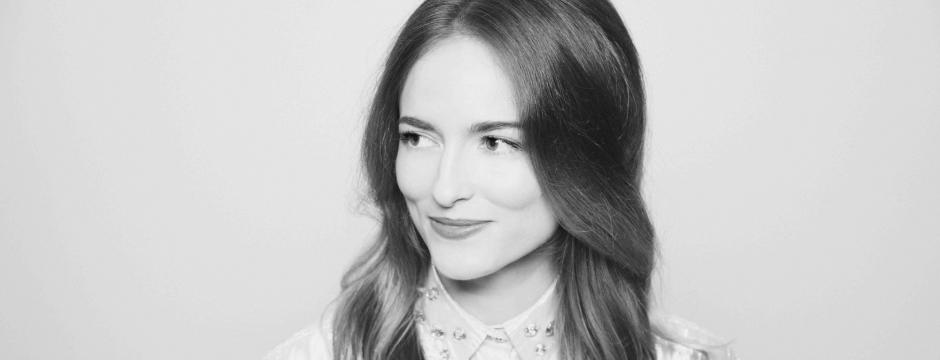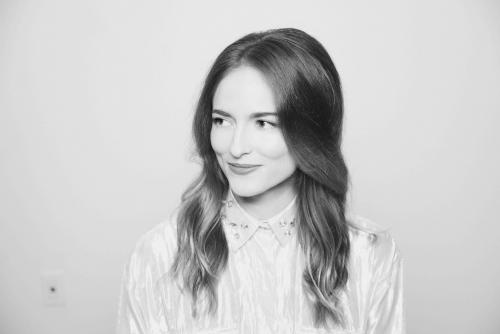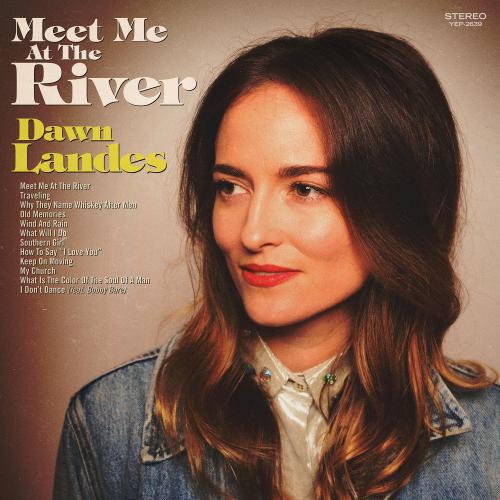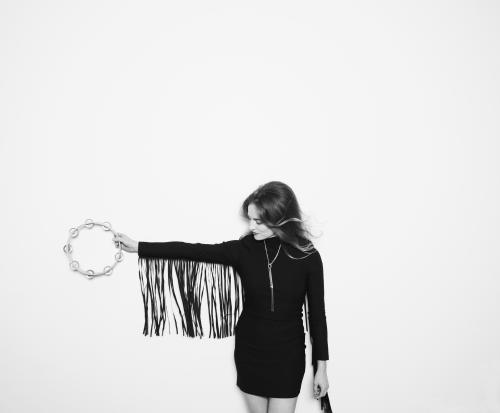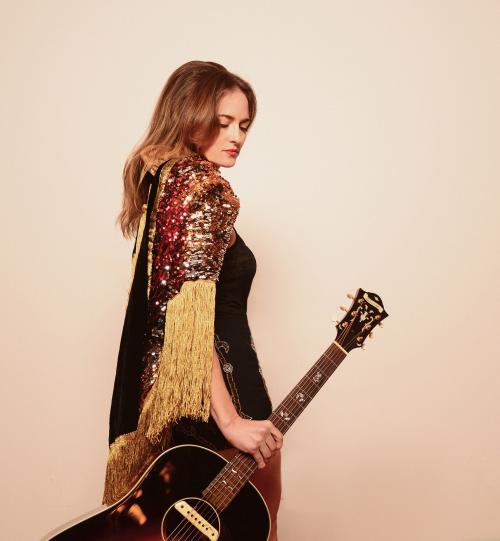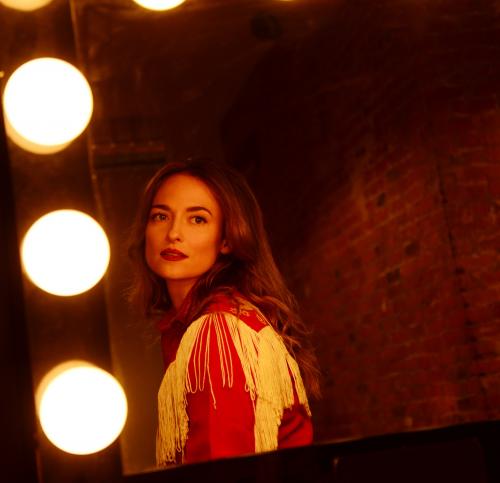Band: Dawn Landes
Album: Meet Me At The River
VÖ: 14.09..2018
Label: Yep Roc / Bertus Musikvertrieb GmbH
Website: www.dawnlandes.com
Through four full-length albums, singer-songwriter Dawn Landes has blazed her own path with songs that are as fresh as they are timeless. Still, there’s no mistaking that strains of Nashville reside in her voice and in her musical soul, and now, with her fifth album, Landes is finally bringing them to center stage.
Meet Me At The River is Landes’ self-described “Nashville record,” and she has assured its pedigree by enlisting the production skills of Fred Foster, the Country Music Hall of Fame member who played a pivotal role in the careers of Dolly Parton, Roy Orbison, and Kris Kristofferson.
“I knew I wanted to make a record in Nashville,” says Landes, who has been based in New York for most of her music career. “I had this idea of what the sound of Nashville was to me – the countrypolitan sound of the ’50s and ’60s – I thought it would be great to work with someone who was actually a part of that scene, so I went straight to the source.”
But how does a New York-based artist attract the attention of a Nashville studio icon, now in his eighties, who is keenly selective about any new project? (His most recent production credits, after all, were on albums by Hall of Famers Willie Nelson, Ray Price, and Merle Haggard.)
Two years ago, Landes first reached out to Foster by phone while she was on tour in New Zealand. Intrigued by her exotic location, Foster recounted “Willie Nelson told me Christ Church, NZ is the most beautiful place on Earth.” He then asked Landes to send him some of her music. “If there’s something I can contribute,” he said, “I’ll let you know.”
What Foster encountered was a library of music that has been attracting ardent fans and critical acclaim since Landes entered New York’s music scene in 1999. Raised in Louisville, Kentucky, and Branson, Missouri, Landes cultivated her musical gifts not only through performing and songwriting, but also through learn-by-doing production work that eventually led her to co-owning a recording studio for a time. Over the years, she has collaborated with such contemporaries as Will Oldham, Justin Townes Earle, and Norah Jones, creating music for albums, movies, and television that crosses folk, rock, and alternative genres.
Foster, of course, liked what he heard and soon invited Landes to his Nashville home – a four-hour visit that convinced both they were kindred musical spirits.
“It wasn’t about finding the right studio or finding the right musicians,” she says. “It was about finding somebody who got me and got the music and who I trusted.”
Foster sent Landes off to “study the Hanks” – songwriting legends Hank Williams and Hank Cochran – and she also found inspiration in two other favorites, Dolly Parton and Lucinda Williams. Over the next several months, Landes began to compile original compositions, adding to a songlist she’d already banked in trips to Nashville for co- writing sessions.
The next step for Landes was to sit down with Foster for lengthy get-togethers that he called “woodshedding” – hours of listening to music, discussing ideas, and finetuning lyrics, all with a side of Foster’s favorite fried pies.
“Artistically, I feel I had a great editor,” Landes says. Foster, she adds, often alluded to Hank Williams’ publisher Fred Rose as the great “song doctor,” and “I feel like that’s what Fred did to my songs. He tuned them, and they’re better for it.”
Ten songs written or co-written by Landes made the cut for the album, offering a range of musical moods and attitudes. “How to Say ‘I Love You’” and “I Don’t Dance” (a duet with Bobby Bare) show off Landes’ light touch with melody and lyrics, while “Wind and Rain” and “Southern Girl” are searing testimonies to heartbreak. Landes takes inspiration from classic country themes with “Why They Name Whiskey After Men,” a done-me- wrong song; “Traveling,” an ode to restless wandering; and “Old Memories,” which addresses the bittersweetness of lost love.
For the title track, “Meet Me at the River,” Landes expresses wistful longings. Turning more inward, she takes on eternal questions with the simple, and simply exquisite, “What Will I Do?” And with “Keep on Moving,” she embraces the tradition of music as political expression, paying tribute to activists and crusaders.
During their meetings, Foster also introduced Landes to the work of Jimmy Driftwood, the late American folk singer, songwriter and activist whom Foster produced in the 1960s.
At one point, Foster simply began reciting the lyrics to Driftwood’s “My Church”: “My church is under the tree/My church is over the sea/and deep in my mind may I always find/My church in the heart of me.”
“It was so moving to me,” she recalls. “I hadn’t even heard what the song sounded like, and I was just floored by the words.”
Ultimately, Landes decided to round out the album with “My Church,” as well as Driftwood’s anthem to racial equality, “What Is the Color of the Soul of Man?”
Though Driftwood passed away in 1998, “his music feels very present,” Landes says. “Woody Guthrie and Hank Williams both had that same gift.”
When Landes was finally ready to record, Foster recruited Kyle Lehning, who produced Randy Travis’ library of hits, to serve as the album’s sound engineer. Together, they made sure Landes had access to Nashville’s musical riches and its heritage.
Most of the sessions took place at Sound Emporium Studios, the “house” that Hall of Famer “Cowboy” Jack Clement built; over the years, it’s been the home to hits by artists ranging from Merle Haggard and Keith Whitley to Alabama Shakes and Jason Isbell.
Foster and Lehning also called up the cream of Nashville’s “A” list of studio musicians: Country Music Hall of Fame member Charlie McCoy (harmonica); Eddie Bayers, 13- time Academy of Country Music drummer of the year; pianist Bobby Wood, who recorded with Elvis Presley and has played keyboards on all of Garth Brooks’ hits; mandolinist-acoustic guitarist Bobby Terry (Willie Nelson, Dolly Parton, Alison Krauss); acoustic guitarist John Willis (Jason Aldean, Brooks & Dunn, Johnny Mathis); fiddler Larry Franklin (Kenny Rogers, Randy Travis, Shania Twain); pedal steel guitarist Russ Pahl (Blake Shelton, Taylor Swift, Eric Church); pianist Steve Nathan (Tim McGraw, George Strait, Little Big Town). Bass player Larry Paxton (Reba McEntire, Kenny Chesney, Alabama) also served as band leader.
Despite years of working with seasoned New York musicians, Landes was astonished by Nashville’s level of musicianship. “I got together with Larry Paxton one day and played him all the songs once, and he charted them out and we went into the studio,” she recalls. “I sang each song and played acoustic guitar while all the musicians stood in a circle all around me and looked at the charts. Then we played it two, maybe three times and it was done.”
From her own years as a producer, she says, “I know how hard that is. It was astonishing. It was magic.”
All the while, Foster assumed quiet command, sitting in the control booth alongside Lehning. “I felt completely at ease with Fred at the helm,” Landes says. “We rarely disagreed. A few times he asked for a tempo change that seemed extremely slow to me in the moment but felt perfect on playback. Listening back, he’d crack a slight smile or give me a thumbs up, and I knew we were on the right path.”
The musicians, in turn, “were in awe of Fred,” Landes says. “They obviously revered him and wanted the sessions to go well.” And with so much history in the room, she recalls, “there were so many stories!”
Perhaps the most memorable day of recording came when country legend Bobby Bare arrived to sing their duet, “I Won’t Dance.” Bare, another member of the Country Music Hall of Fame, was Lehning’s choice, but Landes was the one who had to persuade him to participate.
“I drove to his house by myself to play him the song,” she says. “I was just so nervous about that. He was kind of like Fred when I first met him. Bobby had lots of questions, like who are you, and why are you here, and what do you want from me? I sang him the song, and then he said, ‘Play me something else that you wrote.’ I kind of froze, and he said, ‘Well, play me the song you played last at your last show.’ Which means, what’s your best song? So I played him ‘Twilight’ from my album from 2008, and he liked it. And then I played him recordings of a couple of the songs on the new album, and he said, ‘I’m in.’”
Once in the studio, Bare, Foster and Lehning took their time shooting the breeze and regaling each other with old stories. Once they got down to business, Landes was amazed that Bare joined her in the recording booth with a wad of chewing tobacco in his mouth – definitely not a habit among New York artists. The dialogue song is sprinkled with witty spoken asides by both singers, and Landes guarantees “they were all off the cuff. It was fun, really fun.”
The album was recorded in two series of sessions about six months apart, and in that time, Nashville had worked its wiles on Landes: She and her husband, composer Creighton Irons, decided to leave New York behind and move to Music City. They put down roots just a couple of months before their daughter, Callan, was born in the spring of 2017.
Originally determined to make a “Nashville record,” Landes has now become a part of Nashville’s music scene, and she is eager to share the new album, which is set for release in 2018.
Landes set out to create an album with Nashville “authenticity” – and the people she surrounded herself with assured her of that. In the process, they also helped her achieve what has been her goal throughout her music career: her own authentic voice.
“It just feels real,” Landes says of the new music. Yes, it has a country vibe, but is it country? Landes takes her cue from Foster when she talks about genre.
Despite his place in Nashville’s country music history, Foster “doesn’t consider himself country,” Landes says. “He has a unique taste that I think I identify with somehow. He likes all music as long as it’s good music.”
As she played her music for Foster, she kept asking, “Is it country?” And Foster, ever enigmatic, kept answering, “What country?”
